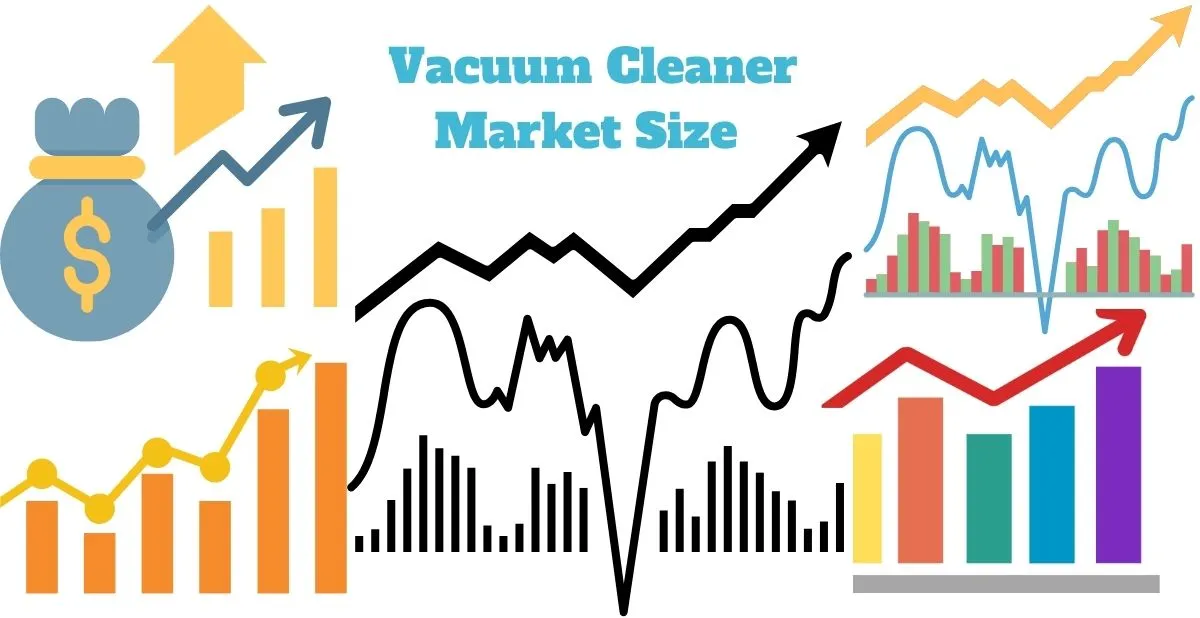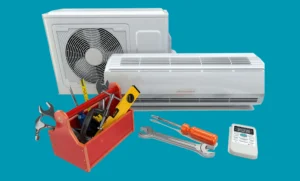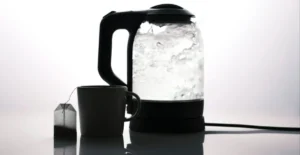The global vacuum cleaner market has seen steady growth in recent years, driven by rising incomes, increasing health consciousness, and growth in the real estate sector. Key players like Dyson, iRobot, Shark Ninja, and Hoover have capitalized on these trends by launching innovative and premium vacuum models packed with smart features. Cordless stick vacuums are gaining popularity for their convenience while robotic vacuums are also seeing higher adoption rates.
Marketplace analysis of vacuum cleaners
Marketplace Scope: The vacuum cleaner market is growing day by day. The vacuum cleaner market is valued at US$40.3 billion in 2022. It has steadily increased to US$43.53 in 2023. Its market has grown by 8% in just one year and is expected to grow further in the coming years.
Territorial Dominator: China is the largest US dollar earner in the world. China’s revenue in 2022 was US$11.5 billion. Revenue in 2023 is US$12.88 billion which is US$1.38 billion more than last year. On the other hand, the United States earned US$5.3 billion in 2022 and increased to US$5.8 billion in 2023. Currently, China is the dominant country for vacuum cleaners.
Vacuuming Trend: The trend of vacuum cleaners is increasing all over the world. In 2022, consumers bought a total of 264.7 million and in 2023, it increased to 279.2 million. It has grown by 5% in just one year.
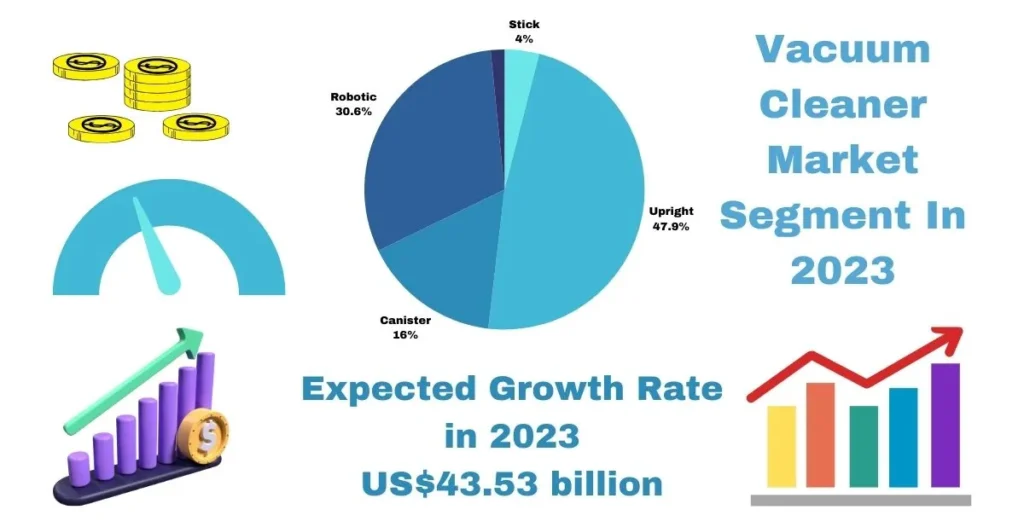
The U.S. Stands out: American households use the most vacuum cleaners are used. Compared to 2022, its use has increased in 2023. Its unit was 0.28 in 2022 and 0.29 in 2023.
Future market vision of vacuum cleaners
Sharp and Skillful: Smart and mechanical vacuum cleaners are meeting the restless expansion. With their sharp, efficient, and innovative mechanization, they are winning the hearts of buyers.
Development Guidelines: Companies manufacturing vacuum cleaners often have to keep an eye on cleaning limits. New highlights include a self-emptying waste basket, high-level planning capabilities, and advanced pet hair removal. Because of this novelty, buyers are leaning towards it.
Future Measure: The vacuum cleaner market is not going backward. Rather, it makes it clear that its market will grow further in the future. It is estimated to reach USD 32.23 billion by 2030. Rising disposable salaries, increasing growth, and the always-developing fascination of understanding home advances will keep on inspiring its development.
Final thoughts on vacuum cleaners market share
In conclusion, the vacuum cleaner market is expected to continue being dominated by upright and robotic vacuums in 2023, holding around 70% of the total market share combined.
Upright vacuums are projected to maintain the largest segment due to ongoing improvements in cordless technology, convenient cleaning performance, and affordable price points. Stick and handheld vacuums will likely grow in popularity for quick and portable cleaning jobs. While canister and drum vacuums will retain a small but dedicated following, especially in Europe, their market share will remain stable.
Overall, the vacuum industry will continue innovating across all product segments in 2023 to meet consumer demand for convenience, powerful suction, and tech integration. Companies able to differentiate through unique features and connectivity will see the most success going forward.
Stick vacuum cleaner market segment/share

As consumers look for more compact, lightweight and versatile cleaning solutions in today’s global market, various companies are positioning stick vacuum cleaners as an attractive alternative to traditional upright or canister vacuum cleaners. In the changing world of vacuums, the Stick Vacuum boasts those features! Their smoothness and flexibility give the system more flexibility and adaptability than ever before. This vacuum cleaner has an impressive heart across the globe, with the market size increasing in 2023 as compared to 2022.
Global market position of stick vacuum cleaner
The global market for stick vacuum cleaners was US$6.53 billion in 2022. It has a market size of about US$7.15 billion in 2023. That’s estimated to have increased by 9.4% in just one year. On the other hand, in 2022, consumers purchased an estimated 264.7 million units of stick vacuums. It will increase to 279.2 million units in 2023. It grew at a CAGR of 5%. Its CAGR is expected to be 6.9% between 2023 and 2031. So we can say that the popularity of stick vacuum cleaners is increasing day by day in the global market.
Why is the stick vacuum cleaner market progressing?
Suitability: The main driving force behind the stick vacuum cleaner is that the user gets the freedom to effortlessly clean furniture, under counters, and even around stairs. It is popular with everyone as it is lighter than other vacuums so users can use it according to their needs. Although some of the premium models of these stick vacuum cleaners are expensive, Companies are developing low-budget stick vacuum cleaners to facilitate consumer goals.
who holds the major share of stick vacuum cleaners?
North America currently holds the major share of the cordless stick vacuum market. This is followed by Europe, Asia Pacific, and the Pacific. Cordless stick vacuum cleaners are the main business segment in the US, Germany, and Japan. Stick vacuums offer a good balance of features and affordability making them attractive in this area.
which company is the key to a stick vacuum cleaner?
Dyson, Shark, Bissell, Tineco, Panasonic, Electrolux, and LG occupy a significant share of the cordless stick vacuum market. These organizations are tirelessly improving their products and trying to further develop new gadgets to meet the evolving ultimate offering.
Future Outlook of Stick Vacuum Cleaner
The stick vacuum market is projected to continue its market growth in the coming years. Analysts forecast a CAGR of 6.9% during the period 2023 to 2031. This vacuum cleaner indicates consumer interest and potential for further innovation and market expansion.
Conclusion of stick vacuum cleaner
Overall, the stick vacuum’s unique ability to fulfill on-the-go cleaning needs with the power of bulkier models will ensure steady market progress. Companies that couple cutting-edge lightweight engineering with user-friendly designs will lead the way. The future looks bright for convenient and portable stick vacuum cleaners.
Upright vacuum cleaner market share/segment
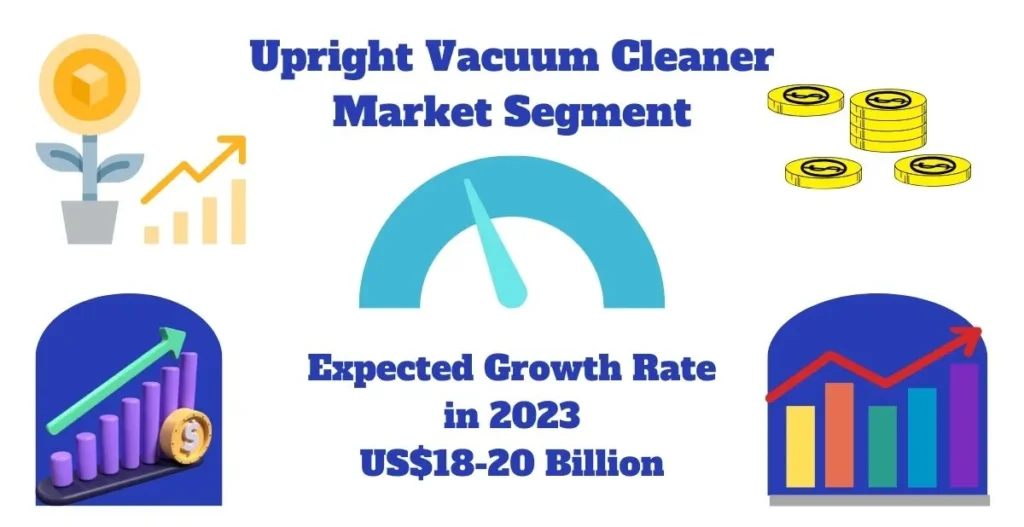
Upright vacuum cleaners are a staple in the routine of house cleaning. It’s ready for silent cleaning across large rugs and hard floors. It is encouraged by its convenience, versatility, and versatility for various cleaning needs. It impresses customers with its ease of use and powerful performance. Despite its mounting handheld opponents, the upright part continues with immovable ubiquity. Upright vacuum cleaners come in both corded and cordless versions. These vacuum cleaners hold a wide share of the market. Below are the market statistics for this vacuum cleaner from last year and the current year.
Current Market Position Of Upright Vacuum Cleaner
Upright vacuum cleaners are estimated to be around US$17-18 billion in 2022. By 2023 it will be US$18-20 billion. These upright vacuum cleaners account for around 40%-45% of the global vacuum cleaner market. It is likely to reach US$43.53 billion by 2032. In 2022, these vacuum cleaners are estimated to sell 245-250 million units, which can be counted as a respectable number. It is estimated to sell 255-260 million units in 2023, a growth of around 2%-5%. Despite experiencing modest growth in recent years, the pure segment continues to hold an unshakable position due to its recognized user base and enduring appeal for old-fashioned cleaning solutions.
What are the key factors driving the Upright Vacuum Cleaners market?
Affordability: Upright vacuums usually offer a lower price than other vacuum cleaners. Due to its low price and ease of use, this vacuum cleaner quickly won the hearts of consumers. This vacuum cleaner is particularly relevant to budget-conscious families and developing markets. Upright vacuums typically offer a more affordable price point relative to other parts such as robotic or cordless stick vacuums.
Performance: Traditional uprights still provide strong suction and effective cleaning on both carpets and hard floors. It continues to attract customers who prioritize thorough cleaning, especially for families with large homes or pets. Strong pressure and real cleaning on carpets and hard floors withstand the original gift of the upright model.
Reliability: Uprights benefit from consistent power and are expected to be acceptable to users for not relying on battery life. Consumers who value reliable performance and want to avoid the hassle of charging and battery degradation use these vacuum cleaners. Consumers may find corded uprights more trustworthy due to a lack of confidence in reliable power and battery life.
Established brand of upright vacuum cleaner market
Established brands like Hoover, Shark, and Bissell have built strong reputations and loyal customer bases for their upright vacuums. This familiarity, trust, and product development have influenced consumer choice for many years.
Regional Differences of Upright Vacuum Cleaner Market
North America continues to be the largest market for upright vacuums, followed by Europe and Asia Pacific (excluding China). However, the development rate is higher in developing regions like Asia Pacific and Latin America, focused on rising throwaway revenues and expansion.
Key point of most popular in the market share
- Falling Price Points: More budget-friendly upright vacuums become available from mass retailers making adoption more accessible.
- Target Commercial Market: Uprights fitted with larger tanks, hardy construction, and specialty attachments aim at professional cleaning.
- Marketing Campaigns: Companies use social media, influencers, and YouTube ads to promote upright vacuum benefits more aggressively.
- Rising Living Standard: A growing global middle class means more consumers can purchase upright vacuums for residential and business use.
Challenges of the Upright Vacuum Cleaners Market
Struggle from cordless segments offering upgraded maneuverability and opportuneness. Technological spreads are gentler in the upright segment matched to newer technologies like robotics and smart features. Shift consumer preference towards silent and lighter cleaning solutions.
Upcoming Outlook of Upright vacuum Cleaners market
The upright vacuum segment is likely to see modest evolution in the coming years, with a projected CAGR of around 2-3%. Revolution in features like maneuverability, noise reduction, and smart functionalities can offer distinction and attract new users. Focus on affordability and catering to explicit cleaning needs in dissimilar regions will be critical for continuing market share.
Summary of upright vacuum cleaner market share
With increased economic growth worldwide, especially in developing markets, the upright vacuum segment is projected for steady expansion as it appeals to residential, commercial, and industrial cleaning needs. Overall, product performance and innovation will be the key drivers going forward.
market segment of Canister vacuum cleaner
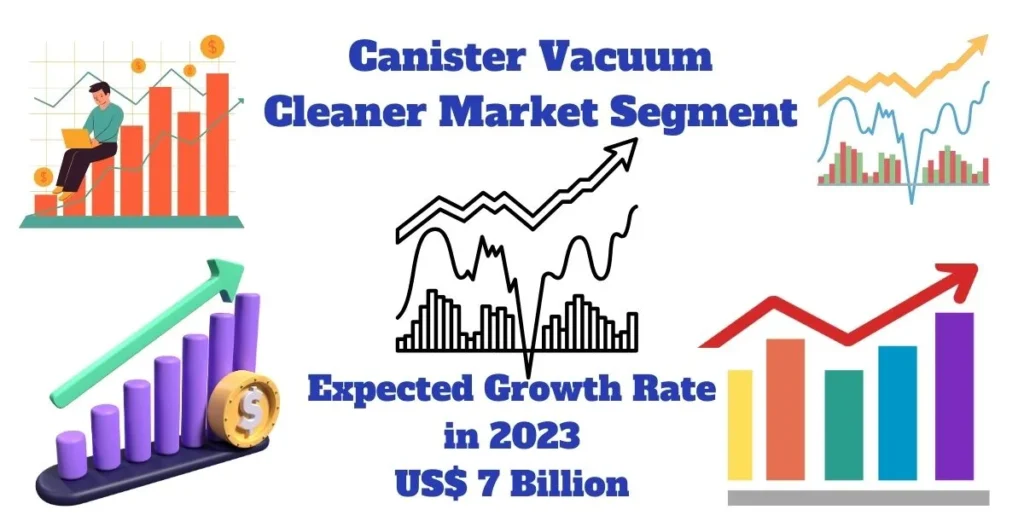
Canister vacuum cleaners are ace with other competitors in the cleaning market for their smooth body and durable cleaning. This machine has carved out a niche in the market unlike their upright counterparts, canisters steeped in flexibility and adaptability. Their light weight makes it easy to clean under and around cabinets. It has contributed to cleaning hardwood floors, area mats and fragile surfaces, usually combined with extensive traction power. The current market size for the perfect cleaning of these vacuum cleaners is increasing.
Marketplace Scope of Canister Vacuum Cleaners
The global market for these vacuum cleaners is estimated to be US$6-7 billion in 2022. A slight increase is estimated at US$7.5 billion in 2023. This indicates the stability of the market conditions. This vacuum cleaner sold around 80-85 million units in 2022. In 2023 it is expected to sell around 82-87 million units. So we can see that these vacuum cleaners have slowly taken over the market. It is expected to grow at a CAGR of around 1-2% over the coming years.
Reason for the popularity of canister vacuum cleaner
Canister vacuum cleaners are popular with everyone because they can easily clean the corners of the room effortlessly. Their soft blades can clean hard-to-reach areas such as stairs, furniture, and upholstery. Indoor hardwood floors and mats are generally preferred by consumers due to their flexibility and light brushing options. Canister models typically have high-level filtration systems that can successfully remove sediment and allergens. This vacuum cleaner is very popular with people who keep pets. It is popular among all for its excellent performance. These vacuum cleaners can last for a long time with little maintenance.
Regional Comparison and Challenges in the Canister Market
- Regional Comparison: Europe dominates the vacuum cleaner market globally accounting for nearly 60% of the total market. Countries like Germany, Austria, and Switzerland prefer these vacuum cleaners for thorough cleaning. It works great for eliminating allergies. Furthermore, this vacuum cleaner market is gradually gaining popularity in the Asia-Pacific region, especially in developed countries such as Japan and South Korea.
- Challenges: This affects the specific cost for buyers higher than many other types of vacuum cleaners. Expanded and diminished adaptability differ from remote options so it can be accommodated in small spaces.
What is the future vision for the canister market?
The canister vacuum cleaner market is expected to CAGR of around 1-2% in upcoming years. Manufacturers can upgrade the offering by focusing on lighter weight, sound reduction, and creative sensitivity controls further developing. With various adaptabilities and precise cleaning can attract new customers.
Key points of Future vision of canister vacuum cleaners
- Cordless Domination – Battery technology improvements will allow cordless canister vacuums to dominate the market. Long runtimes over 60 minutes will enable whole home cleaning without cords.
- Lightweight Design – Increased use of carbon fiber, aluminum, and plastics will lead to canister vacuums weighing less than 5 lbs., making them highly portable and easy to carry.
- Smart Sensors – Canister vacuums will feature integrated digital sensors to detect dust levels, monitor filter status, map cleaning routes, and predict maintenance needs.
- Voice Control – Voice command integration will allow hands-free control of canister vacuums using AI assistants like Alexa or Siri.
- Targeted Filtration – Advances in materials science will enable filters capable of trapping specific allergens and particles depending on consumer needs.
- Creative Aesthetics – Vibrant colors, innovative shapes, and personalized design will become trends as consumers look for appliances that match their style.
- Connected Cleaning – Canister vacuums will sync with smart home ecosystems to provide usage data, schedule automatic cleaning, and integrate with other appliances.
- High-Efficiency – Brushless electric motors coupled with aerodynamic design will maximize airflow and suction power while minimizing noise and energy consumption.
Final Thoughts of Canister Global Market
Key players in the canister vacuum space have driven growth through innovative cordless models, advanced filtration systems, quiet yet powerful operation, and unique aesthetics. Improved swivel steering and lightweight materials have also enhanced maneuverability in small spaces and for cleaning stairs.
Current Market Position Of Robotic Vacuum Cleaners

The Robotic vacuum cleaner market is blasting, with consistent development driving down costs and growing highlights. From self-exhausting dustbins to cell phone application control, these little partners are turning out to be gradually complex. In this way, move to one side brush and mop, the eventual fate of floor care is here, and it’s moving on little wheels. Ok, that explains things! The programmed vacuum fragment is one of the most inspiring and quickest-evolving pieces in the vacuum cleaner market.
Last year Market Extended of robotic vacuum cleaners
Evaluated to be around US$11.5 billion – US$12.0 billion out of 2023. This reports generally 27% – 28% of the worldwide vacuum cleaner market, valued at US$43.53 billion by 2023. The CAGR (build yearly development rate) for the mechanical vacuum portion is predicted to be a rankling 14% – 18% somewhere in the range of 2023 and 2030, making it the speediest developing section by an extended shot.
What is the main reason of the Robotic market?
The main reasons why the robotic vacuum cleaner market is increasing:
- Technology improvements – Robotic vacuums have become smarter, with features like laser mapping, camera navigation, app control, and improved battery life. This makes them more efficient and capable.
- Convenience – Robotic vacuums can be cleaned independently without the owner vacuuming manually. This saves time and effort.
- Connectivity – New models connect to WiFi and can be controlled remotely via smartphone apps. Some even have voice control integration.
- Affordability – Prices for robotic vacuums have come down over the years. Lower-cost models are now available, driving up adoption.
- Smaller Footprints – Robotic vacuums are designed to clean under and around furniture easily. This suits smaller homes and apartments.
- Floor Type Coverage – Advanced sensors and adjustable heights allow robotic vacuums to effectively clean different floor types like hardwood, tile, and carpets.
- Increasing Smart Home Adoption – As more consumers build smart homes, they are adding robotic vacuums that can integrate with other smart devices.
- Targeting Pet Owners – Pet hair can be difficult to keep up with. Robotic vacuums appeal to pet owners for handling pet hair cleanup.
- Busy Lifestyles – Time-strapped consumers want to help to maintain cleaning amidst busy schedules. Robotic vacuums serve this need.
Vital participants in the robotic market
IRobot, Ecovacs, Proscenic, and Samsung are a share of the vital parts in the robotic vacuum section. These administrations are frequently advancing and familiarizing new models with take superior care of the developing awareness.
Market challenges of robotic vacuum cleaners
More excessive cost points are analogized with conservative vacuums. Implementation limitations on specific exteriors like thick protections. Worry about trustworthiness and budding for the anomaly.
Future Viewpoint of Robotic Vacuum Market Share
The robotic vacuum section is made up to advance with its uneven development before long. Expansion in highlights like restrictive antipathy, further developed routes, and blending with savvy home frameworks will fuel further extension. Moderateness is probably going to improve as revolution advances and contest increments, making power-driven vacuums more open to a more extensive crowd.
Final Market thoughts on robotic vacuum cleaners
In summary, the robotic vacuum cleaner industry has experienced rapid growth over the last several years, taking an increasing portion of the overall vacuum market. Analysts project robotic vacuums will command 15-20% of the total vacuum cleaner market share globally by 2025.
The expanding market share of robotic vacuums can be attributed to their unique automated cleaning capabilities and increasing affordability. Time-saving conveniences like scheduling, app controls, and voice commands make robotic models highly desirable, especially among busy households and tech-savvy consumers
Central vacuum cleaner market share/segment Analysis
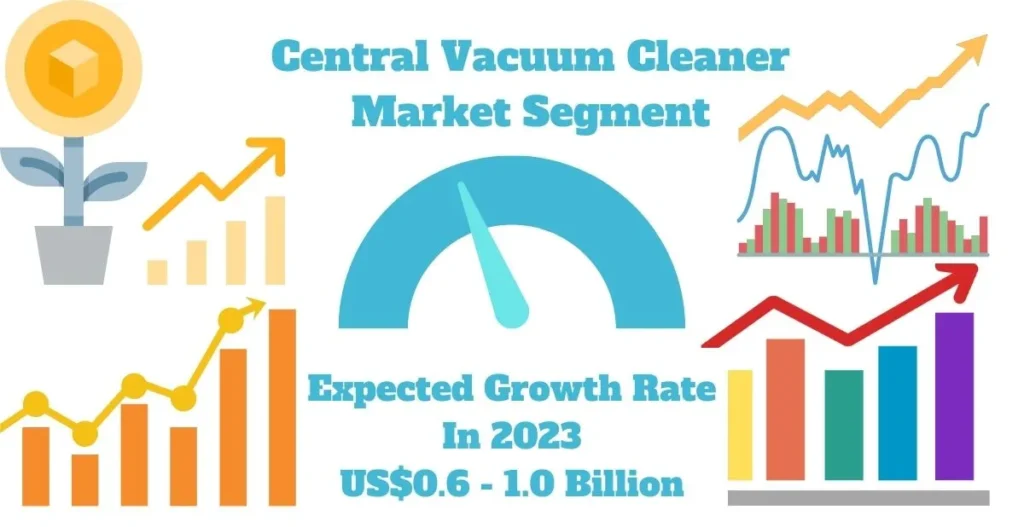
Aside from attractive mixed lines and heavy machinery pulls, focal vacuum wallpapers provide a secret clipping garden of cleaning power. These quiet forces are hidden within the walls, which must be accounted for by whisking soil, debris and rubble through secret cylinders, leaving floors and surfaces perfectly clean. Expect a sense of liberation by attaching a hose to the wall and easily pulling mud from any room. Focal vacuums boast unparalleled suction and easily handle old debris and pet hair that traditional vacuums struggle with. Their secret organization also works to eliminate chaos and impurity, providing a quiet safe home for understanding victims and their families. Whatever the case, the appeal goes beyond convenience. Focal vacuums have unparalleled longevity, with powerful motors and compact cylinders that can be relied upon for a long time.
Global Market position of central vacuum cleaners
It is measured to be between US$0.6 billion and US$1.0 billion by 2023. This covers about 1% – 2% of the worldwide vacuum cleaner market, worth US$43.53 billion by 2023. Although it varies more among the various segments, the major vacuum cleaner market maintains a steady occurrence due to special recalls and a dedicated customer base.
What is the main component of a central vacuum cleaner?
- Motor Unit – This is the power unit that creates the suction. It is installed in a basement, garage, closet or other out-of-the-way location. The motor sizes vary based on the size of the home.
- Filtration – Central vacuums use high-efficiency filters, usually cyclonic separation or multi-level filtration, to remove dust and debris before the air is exhausted. This improves indoor air quality.
- Piping – Smooth-walled PVC pipes running through walls and ceilings connect the inlets to the motor unit. The pipes are usually 2.5-3 inches in diameter.
- Inlets – Inlets placed strategically around the home allow the connection of vacuum hoses. Low voltage wiring is run to inlets to connect on/off switches.
- Vacuum Hose – Lightweight, flexible hoses (typically 1.5-2 inches in diameter) attach to the inlets via a quick-connect system. Hose length is usually 30-50 feet.
- Cleaning Tools – Central vacuums use an assortment of specialized cleaning tools like brushes, crevice tools, and hard floor cleaners that connect to the hose end.
- Dust Cup – A removable dust cup/canister that collects debris before the filtered air exits the motor unit. Large capacity than portable vacuums.
what factors are contributing to the growth of the central vacuum cleaner market?
Several factors are contributing to the growth of the central vacuum cleaner market in the next couple of years:
- Existing Home Remodeling: As homeowners remodel and upgrade their homes, many are choosing to install central vacuums for the convenience and efficiency they provide. Central vacs eliminate the need to drag a canister vacuum from room to room.
- New Construction: Central vacuums are increasingly being designed and installed in new home construction. Builders are appealing to buyers who want the latest amenities and technology built into their homes.
- Improved Technology: Advances in central vacuum technology, such as lighter hoses, quieter motors, and cyclonic filtration, make them more appealing to consumers. Brands are focused on improving suction power and ease of use.
- Smart Home Integration: New central vacuum systems can integrate with smart home platforms, allowing users to control them with their smartphones or voice assistants. This modern convenience feature is attracting tech-savvy consumers.
- Increased Consumer Awareness: As more people become aware of the benefits of central vacuum systems, through home shows, social media, and advertising, demand continues to grow.
Future Viewpoint of Central Vacuum Cleaners Market
Here is a potential future outlook on the central vacuum cleaner market segment:
- Mainstreaming of Central Vacuums – By 2027, a shift from being a luxury feature to a more mainstream and common option included in both new construction and renovation projects will be undertaken by central vacuum systems.
- Voice Control and Home Automation – Central vacuums will integrate further with smart home ecosystems, allowing control via voice assistants like Alexa or Google Home. Owners can turn on/off or schedule cleaning remotely.
- Improved Sensory Technology – Advancements in sensor technology will enable central vacuums to detect dust and debris levels, monitor air quality, and adjust suction power accordingly.
- Focus on Health – With rising concern for indoor air quality, central vacuums will be promoted for their advanced filtration and ability to reduce dust and allergens.
- Energy Efficiency – Stricter energy standards for buildings will drive demand for central vacuums given their higher energy efficiency compared to portable models.
- Customization Options – Homeowners will be able to customize central vacuum features like sound level, accessories included, wall inlet placement to match their needs and budget. Cost Savings – Plummeting costs of core components will make central vacuum installation more affordable, especially in new construction. DIY retrofit options will also expand.

